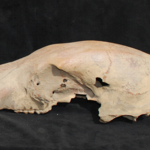Genetics & Molecular Biology

Crispr-Cas9 genome editing is one of the most dramatic innovations of the last few decades, causing an uproar among the Australian medical school community. Proposed by Jennifer Doudna and Emmanuelle Charpentier in their seminal 2012 paper, as a way of editing the DNA of living organisms, in 2013, Crispr-Cas9 was shown to be deployable as a tool for editing human and animal DNA. Since then, researchers have proposed that Crispr can be used for the treatment of disease. In 2020, Doudna and Charpentier won the Nobel Prize in Chemistry, “for the development of a method for genome editing”.…

Since the dawn of civilization, people have searched for the secret to long life. Famously, Gianni Pes, Michel Poulain and Dan Buettner proposed that diet drives a person’s longevity. Other researchers have favored a genetics based explanation for longevity. Recently, a study published in Science found that a mouse’s genes determine its lifespan, and that there are human orthologs, or analogous genes. The study also found that female and male mice have different genes controlling their lifespans, which is interesting considering that female mice have longer lifespans. The study firmly lands…

'Keeping time' is easy for humans, but not all can keep time equally. Some great drummers, and even more guitarists, use a device like a metronome to keep them on a precise beat, while others seem to do it effortlessly.
A new study finds human capacity to move in synchrony with a musical beat may be partially coded in the human genome.
Using over 600,000 23andMe customers who consented to participate in research, a research team identified 69 genetic variants associated with beat synchronization, meaning the ability to move in synchrony with the beat of music. This is only correlation,…

The molecular mechanism that drives the disease-causing effects of the most common genetic risk factor for lupus, HLA-DRB1*03:01, has been revealed in a new study.
Systemic lupus erythematosus is a common, incurable autoimmune disease that affects millions of individuals worldwide, with a particularly high prevalence among women. The genetic variant HLA-DRB1*03:01 is the greatest risk factor for the condition, which involves inflammation in many vital organs, and can lead to severe disability and death.
In the study, investigators found that a protein coded by that HLA variant triggers…

The researchers confirmed there is a system in place that is working to limit the amount of water being lost from the leaf, but what’s causing it is not settled. They believe that water conduits, called aquaporins, located in the cell membranes are responsible.
Researchers from The Australian National University and James Cook University have identified a “natural mechanism that helps plants limit their water loss with little effect on carbon dioxide (CO2) intake, which could mean more resilient crops that are capable of withstanding extreme weather events, including drought. The…

Cells transform from one type into another and activation of a particular set of genes dictates how cells specialize in performing specific tasks and determines when they divide or when they differentiate.
“Now we know that the cell not only contains traditional organelles delineated by a membrane but many molecular processes are confined inside less defined membrane-less organelles, also called biomolecular condensates (biocondensates). During the last ten years, the importance of these biocondensates has started being recognized. We now contribute to this field by showing how a…

Countries where regressive policies toward science have banned modern technologies like genetic engineering are also overwhelmingly unable to feed themselves. Some European countries not only prevent much of Africa from feeding themselves, they ban imports by former colonies that don't do as they are told.
A new breakthrough may mean genetic optimization that green NGOs won't have a reason to ban, like mutagenesis genetic engineering and copper sulfate pesticides, which are currently organic certified.
The new work found that thylakoids, membrane networks key to plant photosynthesis, also…

Newly-discovered historical information adds weight to the belief that given what was known in the mid-19th century, Gregor Mendel, the Austrian (Moravian, now part of the Czech Republic) Monk was even further ahead of his time. So advanced his work was criticized by some as 'too good to be true' despite surviving every challenge.
Resentful scientists may have later tried to claim he must have used more than science but today he is seen as so ahead of his time his work is uncontroversial. Yet at the time the science community ignored him, perhaps because he was a religious leader…

Our modern
human diet is remarkably versatile. Modern farming practices and technological
innovations allowed an unprecedented variety of dietary choices. Our hunter-gatherer
ancestors, though, didn't have this luxury. The harsh climate during cold
seasons forced them to hunt for prey to satisfy their caloric needs when
plants were too scarce. The hunting pressure was so high that it drove many
species to extinction, including mammoths.
In their
stride to prove that our civilization is now capable of eating ancient prey
without engaging in the hunt, our Belgium-based food ingredients…

Genetic admixture didn't begin in the 1970s, when insulin became the first government approved genetically modified organism (GMO) and AquAdvantage salmon, where an Atlantic salmon expresses a natural gene from a Chinook salmon to grow faster, certainly was not the first time such genetic engineering showed benefits across the ecosystem.
A new study finds that genetic admixture occurred in polar bears 100,000 years, but it did not create Frankenbears, it just created better brown bears.
DNA from the skull of an ancient polar bear found in Alaska was used to create a paleogenome and it…